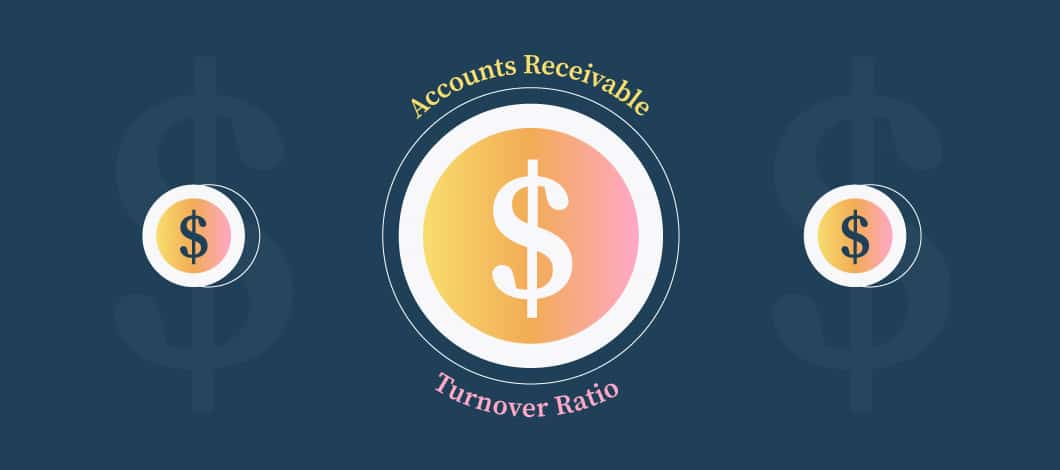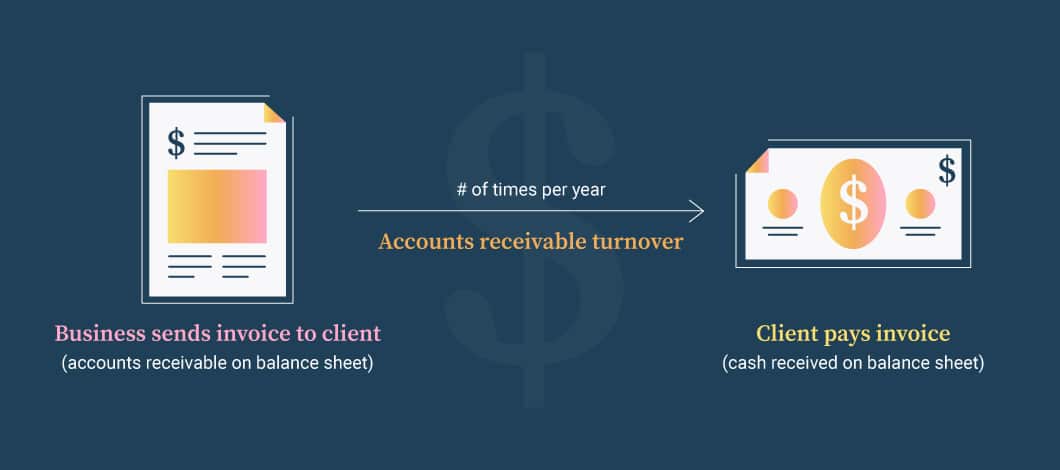The accounts receivable (AR) turnover ratio measures how efficiently your company collects debts. It’s calculated by dividing your net credit sales by your average accounts receivable.
A high ratio means you’ve successfully collected more of what your customers owe you. A low ratio means your customers owe you money you haven’t collected.
Failure to maintain a favorable accounts receivable turnover ratio can mean your cash flow is depleted even if your sales activity is good. Left unchecked, this can lead to cash-flow crunches that can potentially jeopardize your company’s financial solvency.
Here’s a closer look at the accounts receivable turnover ratio, its formula, how to interpret it and what steps you can take to improve it.
What Is the Accounts Receivable Turnover Ratio?
Your accounts receivable turnover ratio, also known as a receiver turnover ratio or debtor’s turnover ratio, is an efficiency ratio that measures how quickly your company extends credit and collects debt. The accounts receivable turnover ratio formula does this by comparing your net credit sales (net receivable sales) to your average accounts receivable (average net receivables) for a given period.
The accounts receivable turnover ratio is usually calculated on an annual basis, using net credit sales and annual average accounts receivable. It also can be calculated over a shorter interval, such as a quarter or a month. This can be useful if you want to know how efficiently you collect debts for sales made during the holiday shopping season compared with other times of the year.
How to Calculate Accounts Receivable Turnover Ratio
The accounts receivable turnover ratio formula is simple to calculate. You need 2 key numbers:
- Net credit sales over a selected period
- Average accounts receivable for the same period
-
Net Credit Sales and Average Accounts Receivable Defined
Your net credit sales represent revenues not paid in cash but generated through sales on credit you extend to your customers. It’s calculated as follows:
Net Credit Sales = Sales on credit – Sales returns – Sales allowances
Your average accounts receivable represents the amount of money your debtors owe your company.
Determine Your Net Credit Sales
You determine your net credit sales by taking total sales on credit and subtracting sales returns (credit issued to customers) and sales allowances (price reductions issued to customers as a result of service issues).
The easiest way to keep track is by entering cash and credit sales separately into your books at the time of purchase as well as creating separate entries for returns and allowances. Note that your net credit sales are normally entered on your income statement.
About Average Accounts Receivable
Average accounts receivable, the other crucial number, is determined by adding accounts receivable at the beginning of a given period to accounts receivable at the end of the same period and dividing by 2. Accounts receivable typically is recorded on your balance sheet and can be derived from this.
Accounts Receivable Turnover Ratio Formula Example
Once you know your net credit sales and average accounts receivable, you simply divide them to get your ratio:
Accounts Receivable Turnover Ratio = Net Credit Sales / Average Accounts Receivable
You can calculate this manually or use an online accounts receivable turnover ratio calculator.
Let’s say, for example, your company’s annual net credit sales are $200,000 and your average accounts receivable for the same year is $50,000.
200,000 / 50,000 = 4
Dividing $200,000 by $50,000 gives you a ratio of 4. The accounts receivable turnover measures how often you collect the average amount of accounts receivable you are owed. In this example, the average amount of accounts receivable is collected 4 times a year, the equivalent of once a quarter.
You can then determine your average accounts receivable collection period. You do this by expressing your annual turnover ratio in terms of accounts receivable days, taking 365 and dividing by your average accounts receivable turnover ratio.
Average Collection Period Formula = 365 / Average Receivable Turnover Ratio
For our previous example, we’d calculate as follows:
365 / 4 = 91.25
This tells you how long the average customer takes to repay their debt to you.
Alternatively, you can calculate the days-in-receivables ratio as follows:
Accounts Receivable / Annual Sales X 365
Using our existing example, this would be written as follows:
50,000 / 200,000 X 365 = 91.25
Accounts Receivable Turnover Analysis
Once you’ve figured out how to determine your accounts receivable ratio and understand your accounts receivable turnover in days, you can analyze the results.
You might be wondering what is a good accounts receivable turnover ratio. In general, a high accounts receivable turnover ratio could indicate that you’re:
- Getting repaid quickly
- Screening customer creditworthiness
- Collecting debts effectively
In contrast, a low accounts receivable turnover ratio can indicate the following:
- Slow debt repayments
- Extending credit without due diligence
- Ineffective debt collection procedures
The figure for a reasonable accounts receivable turnover ratio depends on the context. For instance, if you have very tight credit policies, you’ll have a high ratio, but you could be missing sales opportunities by not extending credit more widely to potential customers.
To determine what your ratio means for your company, track your ratio over time to see whether it goes up or down – and how that correlates with factors like sales volume and cash flow.
If you’re finding your cash flow is frequently tight, you might want to consider re-evaluating your credit policies and your credit repayment timetables.
What constitutes a good AR turnover ratio also varies by industry, so it can be useful to compare your company’s ratio with those of your peers.
Why Knowing Your Accounts Receivable Turnover Ratio Matters
Knowing your accounts receivable turnover ratio can help you determine if a cash-flow shortage is likely to occur between the time sales are made and the time sales revenue actually comes. The AR turnover ratio can also help you take steps to improve your credit policy or debt-collection efficiency.

Improving Your Accounts Receivable Turnover Ratio
How will you go about improving your accounts receivable turnover ratio?
Keep these strategies in mind to impact your score:
- Changing the amount of time you allow customers to repay debts can increase or decrease your ratio.
- Changing your credit extension policy to tighten or loosen qualifications can change your ratio.
- Being more proactive with debt collection can increase your ratio.
If you find you have a low accounts receivable turnover ratio and require capital while you’re seeking to collect your debts, one option is to pursue accounts receivable financing. This is a type of financing in which your lender extends you credit based on accounts receivable that you expect to collect at a future date. This option allows you to tap into money you have coming in the future and put it to use now to finance your business.











